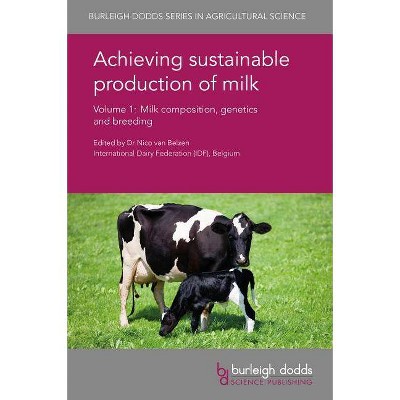Reconciling Agricultural Production with Biodiversity Conservation - (Burleigh Dodds Agricultural Science) (Hardcover)

Similar Products
Products of same category from the store
AllProduct info
<p/><br></br><p><b> About the Book </b></p></br></br>The first part of this volume assesses general issues such as landscape approaches, mapping and assessing the economic value of biodiversity. Part 2 reviews management practices promoting biodiversity such as field margins, hedgerows, improved pasture management and agroforestry.<p/><br></br><p><b> Book Synopsis </b></p></br></br><p>Biodiversity refers to the variety of species and the habitats on which they depend. More intensive, monocultural agriculture has been associated with a decline in diversity of habitat and plant species which leads to corresponding declines in diversity of insect, bird and mammal species. There is mounting evidence that a more biodiverse landscape improves ecosystem services which benefits farmers. This collection summarises the wealth of research on ways of improving biodiversity in agricultural landscapes, with a focus on temperate agriculture.</p><p>The first part of this volume assesses general issues such as ways reconciling agricultural production and biodiversity in grassland management. It also reviews landscape approaches to biodiversity conservation, mapping and modelling biodiversity as well as assessing the economic value of biodiversity conservation practices. Part 2 reviews management practices promoting biodiversity such as field margins, hedgerows, the role of agroecological practices such as Conservation Agriculture, as well as improved pasture management and agroforestry.</p><p/><br></br><p><b> From the Back Cover </b></p></br></br>Biodiversity refers to the variety of species and the habitats on which they depend. More intensive, monocultural agriculture has been associated with a decline in diversity of habitat and plant species which leads to corresponding declines in diversity of insect, bird and mammal species. There is mounting evidence that a more biodiverse landscape improves ecosystem services which benefits farmers. This collection summarises the wealth of research on ways of improving biodiversity in agricultural landscapes, with a focus on temperate agriculture. <p/>The first part of this volume assesses general issues such as ways reconciling agricultural production and biodiversity in grassland management. It also reviews landscape approaches to biodiversity conservation, mapping and modelling biodiversity as well as assessing the economic value of biodiversity conservation practices. Part 2 reviews management practices promoting biodiversity such as field margins, hedgerows, the role of agroecological practices such as Conservation Agriculture, as well as improved pasture management and agroforestry. <p/>With its distinguished editors and chapter authors, <i>Reconciling agricultural production with biodiversity conservation</i> will be a standard reference for university researchers in agroecology, agronomy, integrated pest management (IPM), conservation and environmental science. It will also be relevant to government and other agencies supporting wildlife conservation in agriculture. <p/><b>Dr Paolo Bàrberi</b> is Professor of Agronomy and Field Crops and Head of the Agroecology Group at the Scuola Superiore Sant'Anna (SSSA). Professor Bàrberi is a founding member and Vice-President of Agroecology Europe and has written over 300 publications on topics in agrobiodiversity and agroecology. <p/><b>Dr Anna-Camilla Moonen</b> is an Assistant Professor at SSSA. Dr Moonen is a member of the editorial board of Weed Research, has co-ordinated a number of national and EU projects focussing on the use of functional biodiversity for sustainable agriculture, and has written widely in this area.
Price History
Price Archive shows prices from various stores, lets you see history and find the cheapest. There is no actual sale on the website. For all support, inquiry and suggestion messagescommunication@pricearchive.us




















